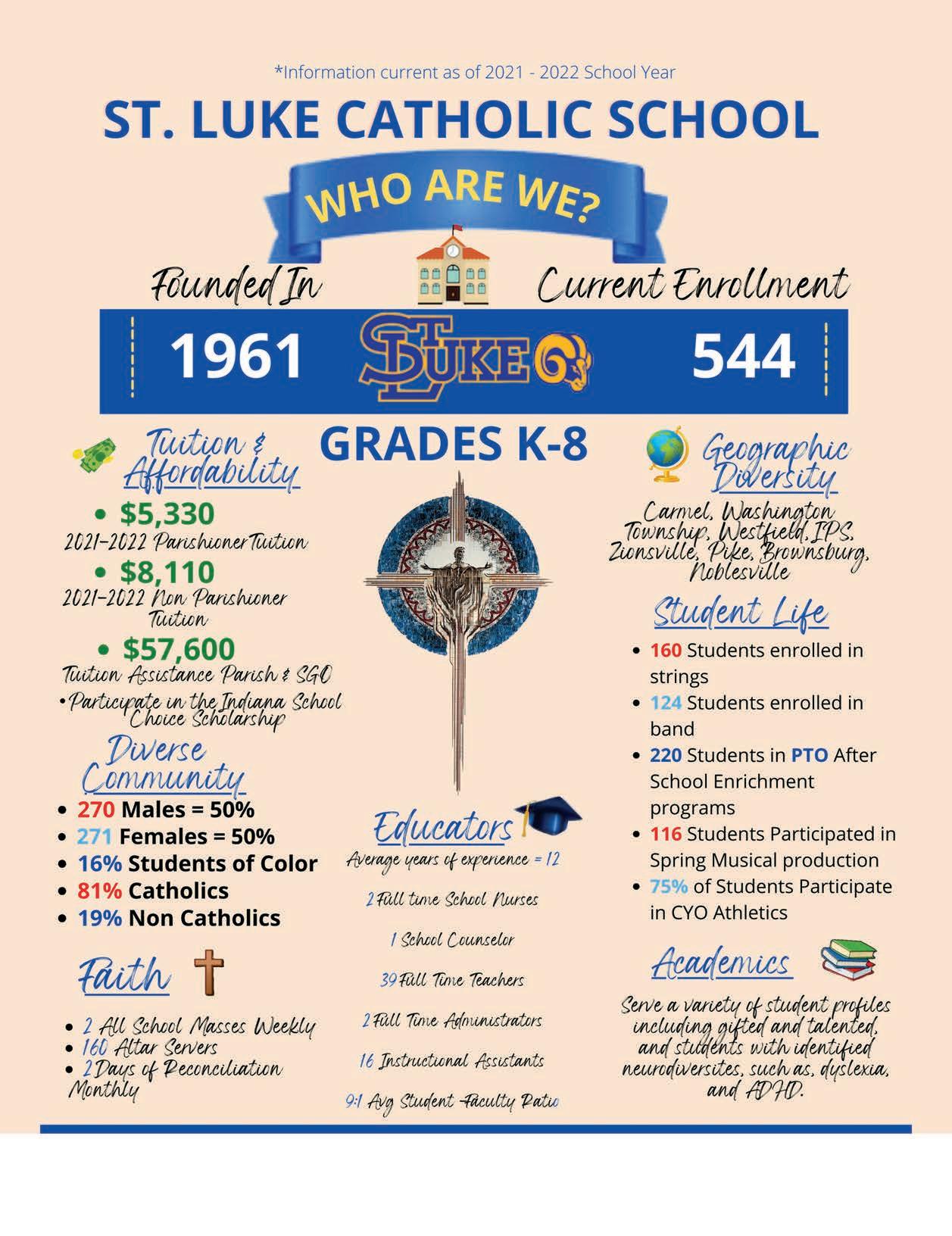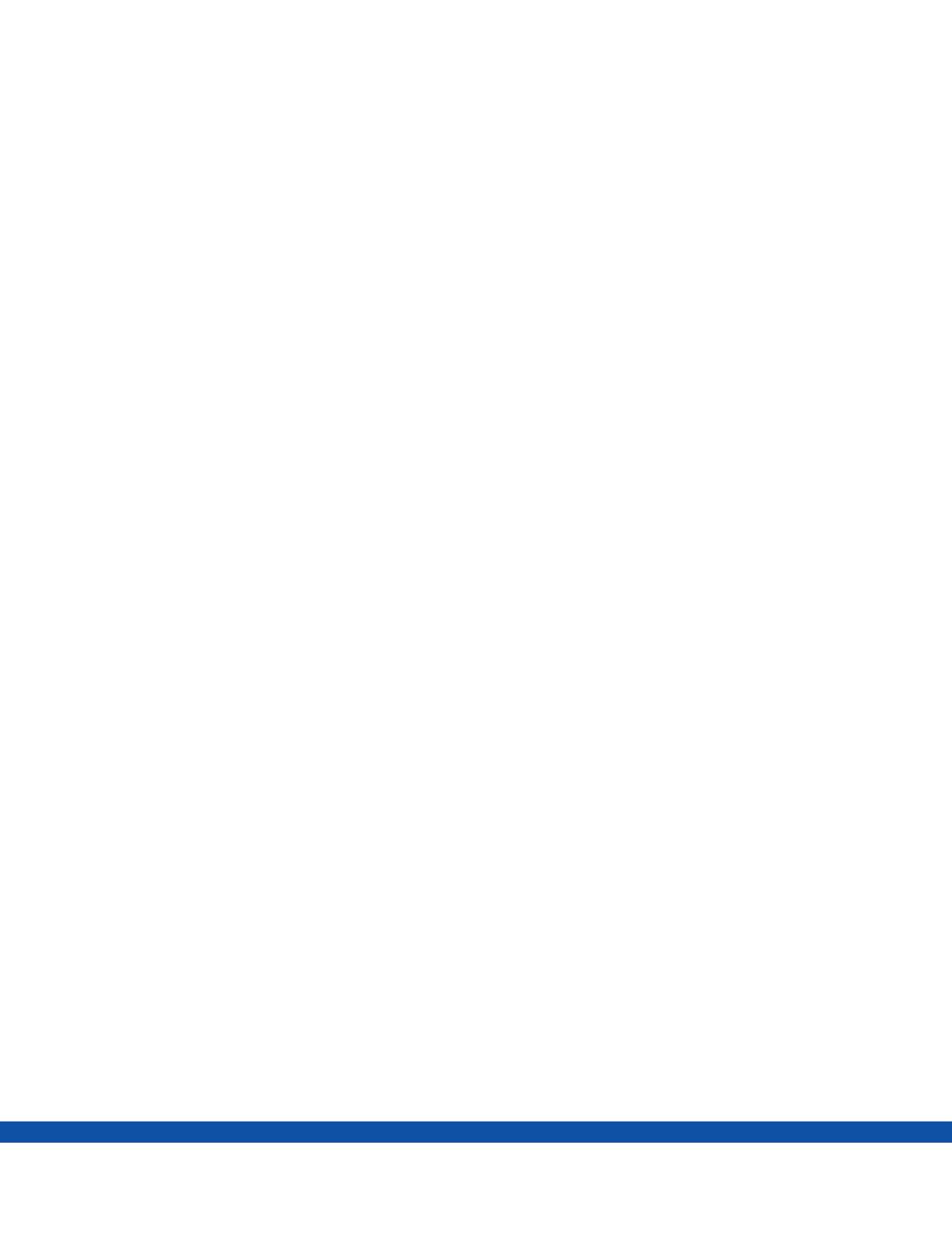
14 minute read
Attention High School Parents and Students: New SAT Requirements Take Effect This March in Indiana
Writer // Janelle Morrison • Photography // Submitted
With the new SAT protocols being implemented this March throughout Indiana, I thought it prudent to reach out to Carmel High School (CHS) College & Career Programming and Resources Coordinator Melinda Stephan to find out the facts about the relevancy of the ACT/SAT when it comes to college and university applications in this current pandemic environment, as well as how the state’s changes to standardized testing as they relate to the SAT are going to impact Indiana high school juniors.
Advertisement
Indiana high school juniors will take the SAT starting in the spring of 2022, and scores will be used to evaluate Hoosier schools’ quality. Lawmakers made the change in 2018 as part of a bill to change Indiana’s diploma structure to align with federal accountability and to align the high school exam with new graduation requirements approved by the state board.
Test-Optional vs. Test-Flexible Policies
Today, more colleges and universities across the nation are going test-optional or test-flexible, either temporarily or permanently, as a result of the pandemic. But even prior to the COVID-19 outbreak, some colleges and universities had already amended their admissions policies to put less emphasis on SAT or ACT scores and more emphasis on a holistic-review approach and multiple factors when reviewing student applications. This was a response by many colleges and universities to address concerns about equity and access barriers for students seeking higher education; however, many merit-based scholarships still require ACT or SAT scores for consideration.
Stephan added, “Most of the colleges and universities that are test-optional are test-optional across the board, but you don’t want to find yourself in a situation where you’re worthy of a scholarship but you didn’t take the SAT or ACT, and now you’re not even being considered. So, it’s just better to take the test and make a decision afterwards as to whether or not you want to send in your score.”
So, what is the difference between test-optional and test-flexible? Test-optional means the college or university does not require applicants to submit standardized test scores when applying for admission. Test-flexible means the college or university gives the students the option to submit other standardized test scores for consideration, such as an International Baccalaureate exam or an Advanced Placement Test, in lieu of an ACT/SAT score but are welcome to submit an ACT/SAT score if they so wish.
Stephan emphasized that she and her colleagues at CHS looks at each individual student’s situation and help them decide on whether or not they should send in their ACT/SAT scores.
“We’ve gotten a lot of questions in the last couple of years from parents and students,” Stephan said. “There is a list of test-optional colleges and universities in the United States, and it’s more than you realize. But there is still a handful of colleges and universities that still require test scores, and they’re usually more selective in nature. Most colleges and universities will post their middle 50%, and so we tell our students to look at that information on the [test-optional] college website, and if their middle 50% for the SAT was 1200, and the student has a 1050, you might not want to send your scores because you’re falling below that middle 50%. If your test scores fall within that 50%, then you’re in a good place to send in your scores.”
New This March—All Indiana High School Juniors Are Required to Take the SAT
The SAT is the new state accountability exam required by the State of Indiana,
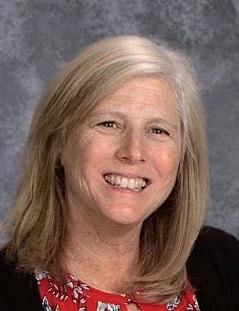
starting with the class of 2023. Any CHS class of 2022 seniors who have not already taken the SAT or ACT will not be eligible to participate in the SAT testing day on March 2, 2022. These seniors will have to register and take the exams on a designated Saturday test day.
High school juniors are not able to opt out of taking the SAT even if they have taken the test previously, have future plans to take it, or don’t intend to take it in the future. Students unable to take the SAT on March 2 due to an absence or illness will have to complete a make-up test at school, within the state’s designated testing windows.
The students will not have to register themselves nor pay to take the SAT on this date. CHS will make all necessary arrangements for students to take the test. The SAT will be taken on a computer by all CHS juniors. This is a different testing format than students will use if/when they take the SAT during College Board-scheduled administrations, which are paper/ pencil exams.
While students are required to take the SAT for state accountability purposes, it is not a graduation-qualifying exam like the ISTEP was previously. In other words, a student does not need to achieve a certain score on the SAT in order to graduate from high school. The state does not require that the actual numerical score be reported on the transcript. Therefore, CHS does not plan to include actual test scores on the transcript.
SAT Prep and Tutoring
There are numerous test prep resources available to students, some of which are free. The best place to start is by using the official SAT prep offered by the College Board in partnership with Khan Academy. This free test prep resource provides access to practice test questions and fulllength practice tests. The CHS Counseling Office also maintains a list of test prep resources in the Counseling Canvas Course.
“There’s no shortage of people trying to help students prepare for these tests,” Stephan stated. “It’s definitely a huge market, but I usually tell students to get familiar with the testing formats, and so maybe do some online free test prep and get familiar with the way the questions are asked. Any time a student can set aside some time on a weekend to do a full-length practice test is only going to help with testing strategies, timing and how things are worded. A lot of it is just understanding how to take the test, and that’s why students have been doing better the second time they take it because they’re familiar with it.”
Stephan explained that if a student wants to retake the SAT to improve their score, they can, but they will need to register and pay to take the test during a test date offered by the College Board. The same applies for students who want to take the ACT in addition to the required SAT. The student will need to register and pay for the ACT through the College Board.
Scores from the March 2 SAT will be available in late March/early April, and make-up SAT scores will be available in May. More details about how to access scores will be shared by CHS counselors later this spring. If you have additional questions, please contact your CHS counselor.
For a comprehensive list of test-optional colleges and universities throughout the U.S., visit fairtest.org.

BRYANT BEARD:
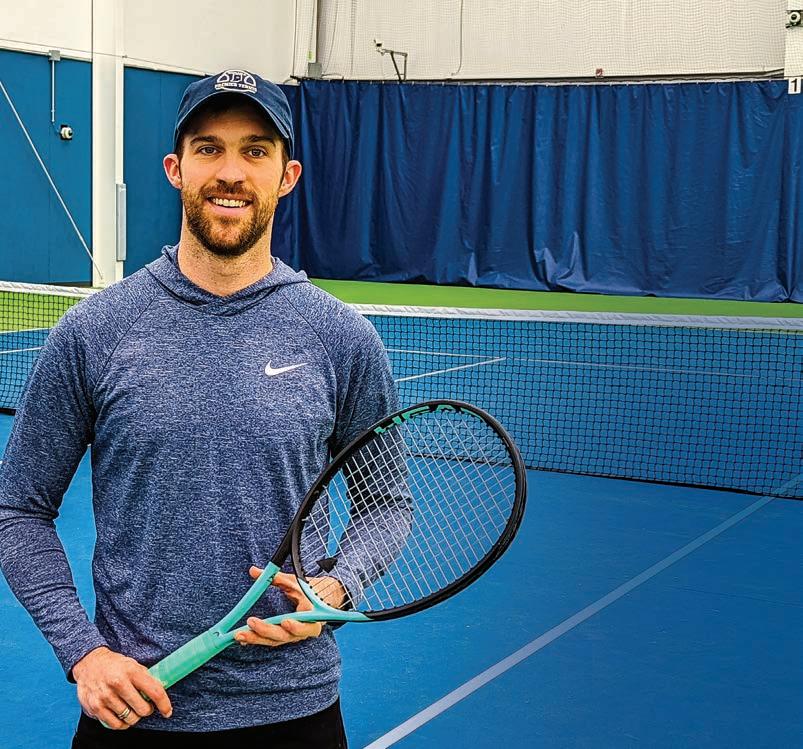
Life Lessons From The Heart
Writer // Janelle Morrison Photography // Staff and submitted
Carmel resident Bryant Beard has always been one to take the path less traveled, and since stepping into the role as director of tennis with Indiana Premier Tennis at Community Sports & Wellness in Pendleton, Indiana, Beard is continuing to dream big and is encouraging his students—of all ages—to take a page from his playbook: Maximize your strengths, grow from your weaknesses and live life to the fullest, regardless of what obstacles life serves you.
Bryant, a self-proclaimed global citizen, has overcome a heart defect that went undetected until he was 9 years old. He has lived and studied abroad, teaching English, before moving back to the U.S. and eventually to Carmel with his wife, Alinka, where they are raising their 8-month-old son. Beard’s unorthodox path to becoming a tennis coach and director, along with his unique perspectives on life and humanity, are why we are pleased to feature him on our cover this month.
A MEDICAL ANOMALY
Beard was born with a coarctation of the aorta—a narrowing of the aorta that leads from the heart. This type of defect is typically discovered at birth. Beard shared that around age 8 and 9, he would feel pain in his chest after running or physically exerting his body. His physician at that time discovered a murmur, and subsequent tests diagnosed Beard’s condition. To say that discovery made an impact on Beard’s life as a child is a gross understatement. But it’s how he decided to live his life that set the trajectory for Beard’s achievements and successes throughout his life and career.
“My heart has to work at a higher percentage in order for the blood to be pushed through the small narrowing,” Beard shared. “Think of it as Black Friday—prepandemic and preonline shopping. The doorways are normally fine, but when you’ve got a little bit of chaos and everybody’s trying to flood in—they’re not [fine]. For whatever reason, my condition went missed, and from what I’ve been told, that is very rare. I’m kind of a statistical anomaly. I went 9 years of age without any other severe defects or dropping dead, which happens a lot with this type of issue.”
Prior to his diagnosis, Beard participated in sports such as AAU wrestling and Little League Baseball, and he enjoyed playing at recess like a physically healthy young child.
“When I was 9, I had to stop everything I was doing at that point,” Beard said. “I was underdeveloped and very skinny because my heart wasn’t functioning properly, and I had other problems that came down to this heart issue. I had my first surgery at Riley Hospital for Children that summer and had another surgery—angioplasty—at 10. I haven’t had any surgeries since, and I get checked every year and a half now. Since becoming an adult, I’m pretty much good to go because my body’s not growing anymore, but I have to monitor it and make sure I don’t ‘overdo’ things.”
After his surgeries, Beard was released to play noncontact sports, and so he picked up tennis.
“My life was changed very drastically,” Beard reflected. “I wasn’t allowed to play [contact] sports and wasn’t allowed to eat more than 2,000 milligrams of salt a day. Every day at lunch I had to eat the same thing and was literally under the lunch table trading food. I had a lot of limitations, and I think as a result of those [limitations], and I’m sure my parents were a big part of that too—I made a philosophical change. I was a curious person and read a lot beforehand, but when you’re 9 and 10 and you have to sit back and watch everyone, you subconsciously become very detailed-oriented. And I think that’s the framework that led me to become who I am today.”
A PERPETUAL STUDENT OF LIFE
Beard participated in a tennis camp the summer before entering high school. Beard played on the men’s varsity tennis team while managing and assisting the women’s tennis team. While improving upon his skills on the court, Beard continued building his academic strengths, which turned out to be in linguistics.
Beard is multilingual and speaks English, French and Spanish fluently. While uncertain what he wanted to do post-high school graduation, Beard attended Anderson University with the initial intention of studying graphic design. Beard had developed a skill and passion for drawing during the years that he couldn’t engage in extraneous physical activity. His first weekend at the university, Beard changed his mind on his areas of study and dove into social studies and French education.
“So, I specialized in basically history, English and French for the next few years,” Beard said. “I knew I wanted to teach, but I didn’t want to be in the ‘box’ of the education system in the U.S. I didn’t really have a plan; I just knew that I wanted to keep learning languages and wanted to be somewhere new.”
Beard played tennis while attending Anderson University and graduated in 2012 with a bachelor’s degree in French and history. He also received his TESOL (Teachers of English to Speakers of Other Languages) certification in 2012.
Prior to being married in Anderson, Indiana, Beard and Alinka—who is of Polish and Honduras descent—traveled to Europe, where Alinka would finish studying for her master’s degree and Beard would teach English to youth. The pair lived in Germany and Sweden for the better part of a year before moving to Honduras, where they lived another year or so with her family. Beard taught in local schools, and it is there in Honduras, he learned to speak fluent Spanish.
“Being very process-oriented from a young age, I joke that I learned more after college because I had time to read,” Beard stated. “Once I got outside of the syllabus, I could just go after things, and I’ve been fortunate to have been in many diverse situations where I was uncomfortable and always learning something. When I was living in Honduras, I needed to learn Spanish to emotionally connect with my family and survive daily life— that’s a big reason why I picked it up.”
Beard’s passion for teaching and perpetual learning would be key attributes in the next chapter of his life. He and Alinka—now married—moved back to the U.S. in 2015. That same year, Beard was hired at Anderson University, where he coached Men’s D3 and Women’s D3 tennis. He was also giving private lessons and volunteering with many other teams in the community.
“I’ve enjoyed being a coach, a mentor, a brother and a father—both figuratively and literally,” Beard shared. “Looking at all the things that I’ve developed as a result of being that detail-oriented mentality is what has helped me grow really fast in the tennis industry around here, and I have some very big goals.”

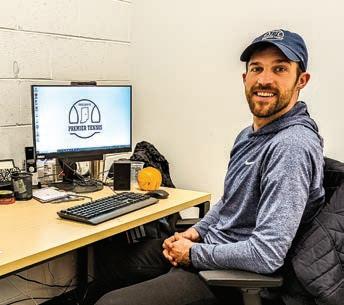
THIS ISN’T COUNTRY CLUB TENNIS
Originally, Beard was hired on by Community Sports & Wellness to manage the pro shop and get it up and running for the new facility that opened in December of 2020. Beard also began coaching a couple of classes before stepping into the role of director last September.
While they are a for-profit facility, Beard is exploring ways to develop scholarship opportunities for students and youth who would otherwise not have the opportunity to play tennis due to financial hardship. Meanwhile, Beard is changing things up on the court and is exposing all ages and skill levels to the world of tennis, while exposing his participants to a more diverse and rather atypical tennis club environment.
For example, one of the classes that Beard coaches is an inclusive beginner-level tennis class that celebrates Latin American culture. So, what does that look and sound like?
“We’ve been doing this twice a week on Mondays and Fridays,” Beard explained. “Anyone can come and play tennis in a beginner setting where we play salsa music and tell jokes in Spanish. Everyone is welcome—this isn’t country club tennis. I don’t want to be just another high-performance club. I want people to get involved in tennis and make it their own. That’s my personal vision, and the vision that I want the club to be.”
Beard’s vision also involves a heavy focus on the youth members—teaching them grit, mindfulness, gratitude and social skills.
“Teaching the youth is the most important thing to me because we’re planting seeds,” Beard said. “When it comes to inclusiveness, that’s happening organically already if you’re in my class because I have an eye for that and it’s important to me to make everyone feel empowered and welcome. The next thing you know, you have this tree of people that are less ethnocentric.”
When asked what his best advice— based on his life’s experiences—is to kids who have obstacles in their lives that would otherwise keep them from achieving their dreams and goals, whether they’re physical, financial or other types of limitations, Beard replied, “The key is to spend time recognizing what you’re in control of and what you’re responsible for. Be present where you are in life. Ask questions and don’t be obsessed with answers. It will take so much weight off of you as a child and as an adult. If you’re obsessed with wins and losses, you’re missing the point of growth.”
For more information on Bryant Beard and his tennis classes, visit communitysw.com.

